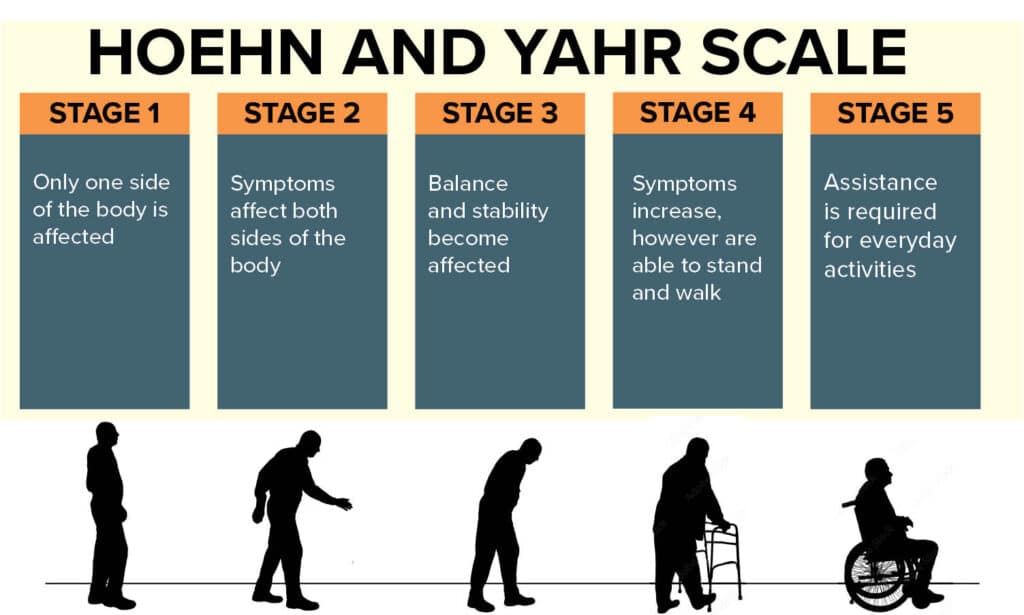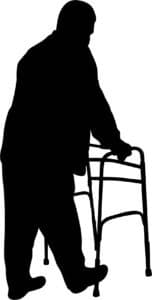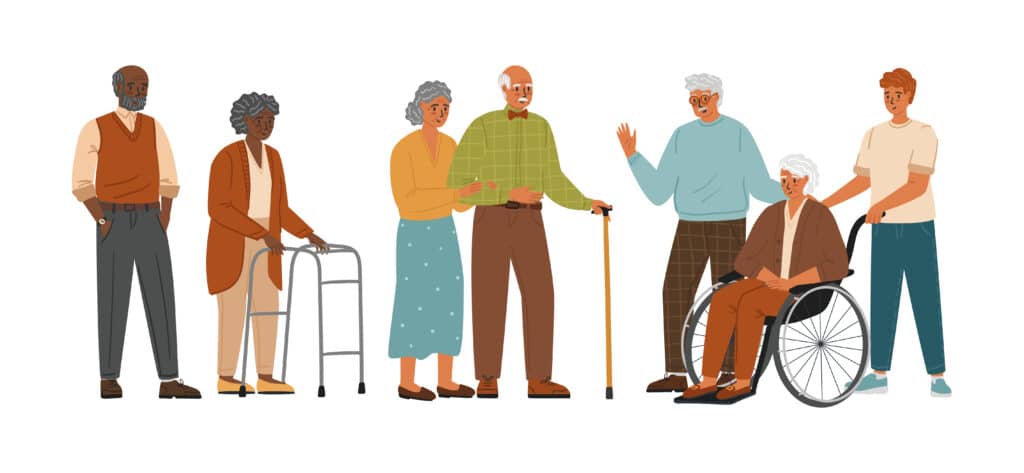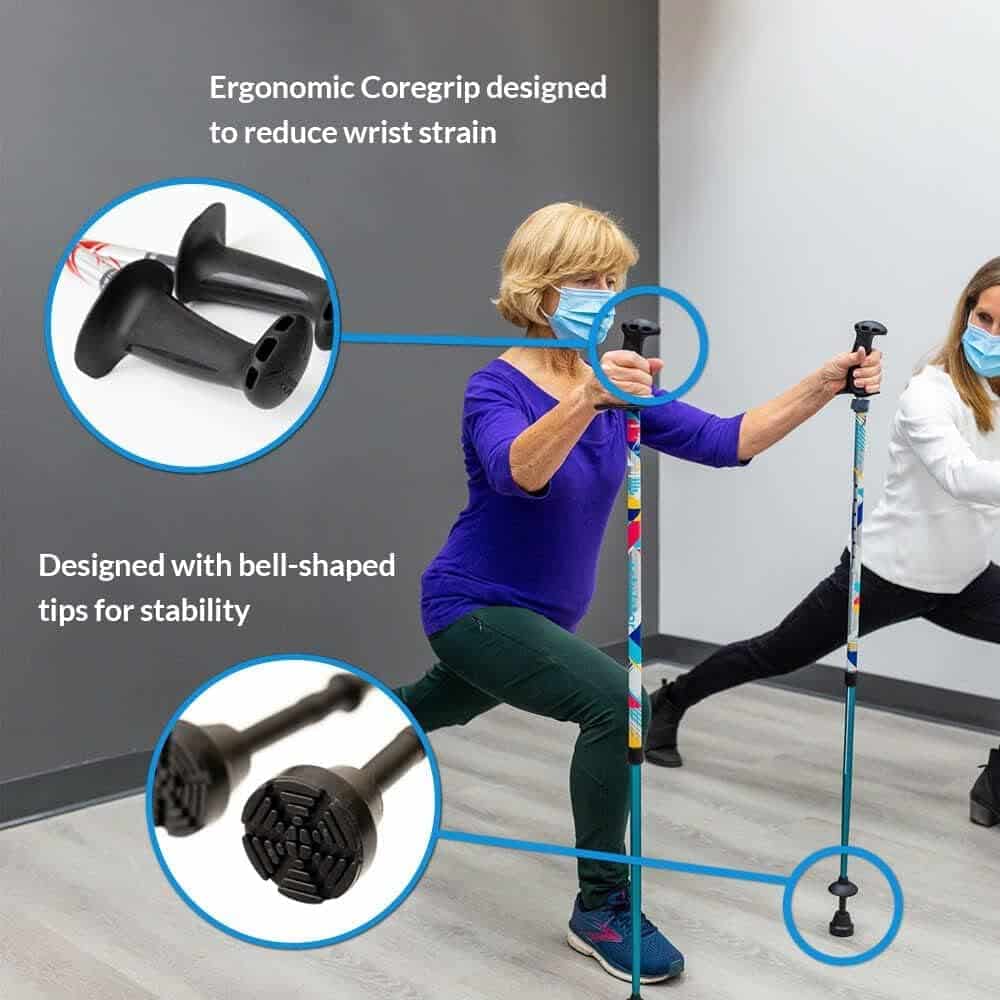Parkinson’s Disease (PD) is a nervous system disorder with varied and progressive symptoms. According to the Parkinson’s Foundation, roughly 10 million people worldwide currently live with the disease. Some of these symptoms include involuntary muscle movements, balance problems, and poor coordination. To determine how far along a person is in the disease process, clinicians can use the Hoehn and Yahr (H-Y) scale. This article describes what to expect during each of the five stages of Parkinson’s Disease. (1)
What Causes Parkinson’s Disease?
The most common symptoms of PD are the result of the impairment or death of brain cells (neurons) in a specific region of the brain called the basal ganglia. These cells are responsible for making dopamine, often referred to as the “pleasure” chemical.
Dopamine also plays a role in controlling movement. When these cells die or malfunction, they can cause a decrease in dopamine levels. Lower dopamine results in many of the hallmark symptoms associated with PD.
The progression of Parkinson’s Disease will vary from person to person. Some may experience the progression of symptoms along a twenty- to twenty-five-year timeline, while in others they might develop faster.
The symptoms a person experiences may also differ. For some, movement symptoms affect the body early, while in others non-motor symptoms like speech impairment may become obvious earlier. It is not clear why certain people tend to progress faster in the disease process than others. Every person will not typically experience all the symptoms of Parkinson’s Disease. (2)
Symptoms tend to worsen as dopamine levels continue to decline, and other nerves become vulnerable to damage. Brain chemistry imbalance can result in further symptoms as the disease progresses, like dizziness due to drops in blood pressure when going from sitting to standing.
While a PD diagnosis may seem scary, there are many treatment options that have had a positive response. Medication can help to manage or control symptoms, and improve the quality of life for some patients. Talk to your doctor to determine whether medication might be helpful if you have a recent Parkinson’s diagnosis.
Physical therapy, occupational therapy, and speech therapy can also be helpful. Physical therapy can help with gait disorders, tremors, and muscle stiffness. Research shows the importance of exercises to improve balance, strength, and coordination.
The Hoehn and Yahr Scale

Published in 1967, researchers Hoehn and Yahr created a scale to grade the progression of Parkinson’s disease. Unfortunately, the scale is limited only to the grading of motor symptoms and does not consider non-movement symptoms. For this reason, it is considered more of a generalized measure instead of an exact one. (3)
According to the H-Y scale, there are five stages of Parkinson’s progression. Stages one and two usually constitute the early stages; stages two and three are considered mid-stage, while three and above are considered the “final stages” of the disease.
Parkinson’s has a wide and complex array of symptoms that are hard to capture on this limited scale. A person could be in “stage one” but be depressed and unable to speak or struggle with memory issues.
These stages cannot fully capture the true disability levels of some people with Parkinson’s. However, the H-Y scale can be helpful to better understand the progression of motor symptoms for many Parkinson’s patients.
The Five Stages of Parkinson’s Disease
STAGE 1: FIRST SYMPTOMS OF PARKINSON’S

Early-stage symptoms of Parkinson’s are generally mild, and may even go unnoticed, initially. You may develop a unilateral tremor– or tremor on one side of your body. People around you may ask you to speak up, as you may find yourself speaking more softly than usual.
Other common symptoms include difficulty getting up from a sitting position, and a stooped forward posture. This stage can also include dulling of facial expressions on one side of your face. You may notice handwriting changes as you find yourself writing smaller than usual. One of the most pronounced aspects of this stage is that your symptoms are present on only one side of your body.
STAGE 2: MILD TO MODERATE PARKINSON’S SYMPTOMS

Stage two is considered the first of the mild-to-moderate Parkinson’s disease stages. During this stage, your symptoms may begin to present bilaterally– or on both sides. One side will remain dominant in symptom presentation, but weakness or tremors will be present on both sides of your body. You may experience reduced arm swing on both sides, less animated facial expressions, and increasingly poor posture.
Additionally, your mid-section may become rigid and problems walking might become more obvious. You may find yourself taking short, shuffling steps, leaning forward while you walk, or walking slower than normal. You may also have trouble reaching overhead to grab items from the kitchen cabinets.
People with stage two PD are typically still independent but may have more difficulty with daily tasks.
Using Poles for Stability During Exercise
Many of our Parkinson’s patients like to use walking poles for added security during exercise. The type of poles you use definitely makes a difference. Urban Poling ACTIVATOR Poles are our #1 recommendation. Urban Poling ACTIVATOR Poles were designed by an occupational therapist & gerontologist specifically for rehab and long-term conditions. The smart design enhances strengthening, stability and off-loading with your safety in mind. These are the right support tool while challenging yourself through a Parkinson’s exercise program.
Our recommendations are the same items we trust and prescribe to patients. When you buy through links like this on our site, we may earn an affiliate commission to support new content.
STAGE 3: PARKINSONS AND BALANCE

The most prominent marker of stage three Parkinson’s is balance impairment, especially unsteadiness during turns or when your body changes positions. Motor symptoms present during stages one and two may continue to worsen, while fall risk becomes more obvious.
Balance can be hard to measure, but previously simple balancing tasks may become harder. You may feel wobbly on your feet, or less able to walk over uneven surfaces, like gravel or grass, without holding onto something or someone.
One of the tests commonly performed to check your balance involves a clinician pulling you back while standing. The doctor performing the test will then watch your physical response. If you take one-to-two steps and regain your balance, that would be considered normal. If you take many shuffling steps, or even lose your balance fully, it is an indicator of poor balance.
Despite these symptoms, many Parkinson’s patients may still be living independently at this point. Around this stage, family and friends may consider providing occasional supervision to prevent falls or other environmental factors that could lead to injury. (3)
STAGE 4: CHOICES ABOUT INDEPENDENCE

This is the first of Parkinson’s late stages, otherwise referred to as “end-stage” Parkinson’s. At this point, the H-Y scale considers the disability level severe. You may require an assistive device, such as a cane or a walker. Freezing of gait– or inability to intentionally move the feet while walking– can also impact steadiness and increase the risk of falls. (5)
Though with stage four PD you may still be able to stand and move, daily tasks may become difficult. You may have difficulty bathing, getting dressed or brushing your teeth without assistance. At this point, you will likely require help with most chores and household activities, and your independence may dwindle during this debilitating stage.
STAGE 5: LATE-STAGE AND NEUROCOGNITIVE SYMPTOMS

This is the most debilitating stage of Parkinson’s disease. The most prominent aspect of this stage is an inability to stand and walk which typically confines a person to a wheelchair and/or bed. Stage five Parkinson’s may require constant care for all activities due to extreme stiffness and worsening non-motor symptoms.
Late-stage Parkinson’s will often present a variety of symptoms that will vary from person to person. These can include swallowing difficulties and other physical or cognitive impairments.
Cognitive challenges may include memory loss, behavioral changes, depression, and limited attention. Lewy Body Dementia (otherwise known as Parkinson’s dementia) is common in advanced-stage PD.
While symptoms can emerge at any time during the disease progression, in this most advanced stage you are likely to encounter both physical and cognitive symptoms.
Summary
The progression of Parkinson’s is often slow, and research indicates that treatment methods including therapies and medications can help to manage the effects of the disease. Support groups can be helpful for those with Parkinson’s, as well as family members, caretakers and friends.
The H-Y staging can be useful for identifying the general progression of Parkinson’s motor symptoms, but staging is broad and often does not give a full picture of an individual with Parkinson’s.
Both physical and cognitive (non-motor) symptoms impact the level of disability. Each Parkinson’s experience is unique; by working with a team of health professionals, you can get an individualized treatment plan to maximize your safety and quality of life in all stages of treatment.
References
The Parkinson’s Foundation https://www.parkinson.org/understanding-parkinsons/statistics
The National Institute of Health https://www.nia.nih.gov/health/parkinsons-disease
The United States Department of Veterans Affairs https://www.parkinsons.va.gov/resources/HY.asp
The Parkinson’s Foundation: Fall Prevention https://www.parkinson.org/library/fact-sheets/falls-prevention
The American Parkinson’s Disease Association: Freezing of Gait https://www.apdaparkinson.org/article/freezing-gait-and-parkinsons-disease/
The National Institute on Aging: What Is Lewy Body Dementia? Causes, Symptoms, and Treatments https://www.nia.nih.gov/health/what-lewy-body-dementia-causes-symptoms-and-treatments










